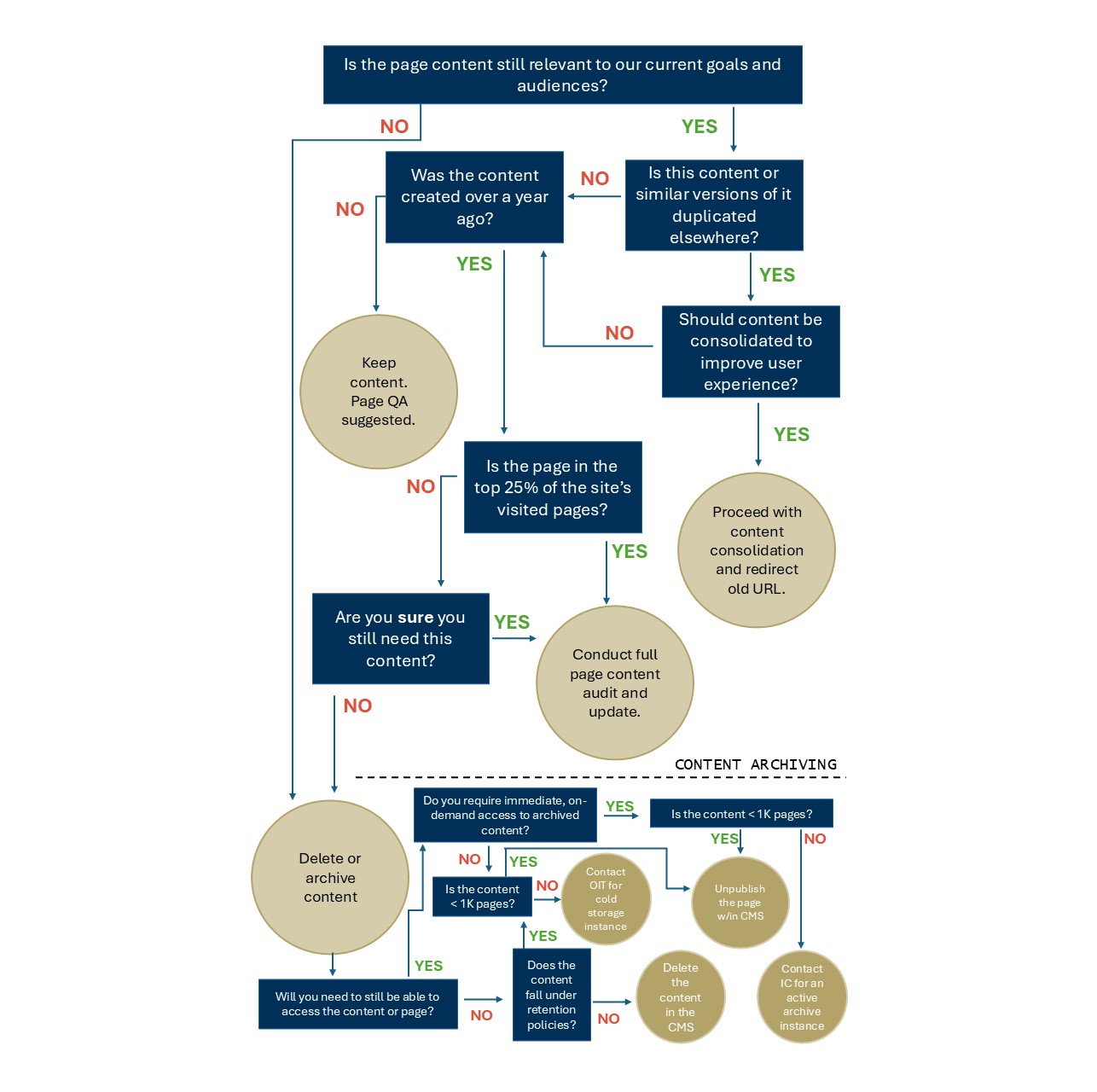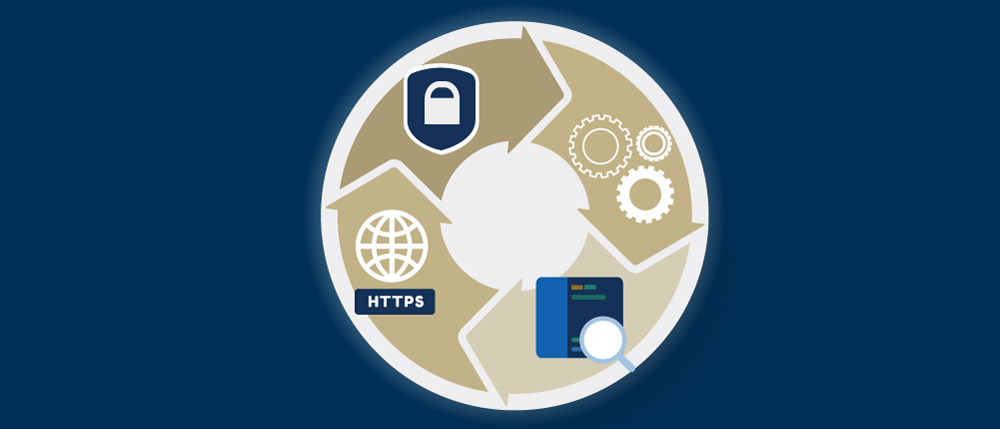The Importance of Web Content Lifecycle Management:
1.
- Enhances user experience
- Simplifies navigation
- Ensures content is up-to-date
- Improves accessibility
2.
- Improves SEO and search rankings
- Reduces duplicate or outdated content that harms rankings
- Aligns content with current SEO best practices
3.
- Builds credibility and professionalism
- Reflects a current polished image of the organization
- Removes outdated or incorrect information that could damage trust
- Reflects organizational growth
4.
- Increases efficiency, reduce costs, and strengthen compliance and security
What You Need to Know
While a working group of individuals partner with unit representatives on a comprehensive strategy to provide the necessary tools and resources to campus, units are being asked to focus first on their individual websites and the content contained therein.
What content assessment looks like for units, and what you need to do:
- Inventory all websites: Confirm that all websites and pages affiliated with a unit or individuals in a unit are cataloged in the central inventory.
- Assess web inventory: Review full inventory for each unit and confirm whether a website is still needed. Sunset as appropriate.
- Assess web content: Review all web content using best practices. Update, remove, or create new content as appropriate.
Ultimately, the goal is for each website remaining to have been fully assessed with valuable, up-to-date content that meets the needs of our end users. These websites will be prepared for migration to the updated centrally provided content management system(s) and hosting platforms once available.
(text and background only visible when logged in)
Web Content Lifecycle Decision Tree

An accessible version of this content lifecycle decision tree is currently being created and will be made available as soon as possible. In the interim, if you have any questions, please reach out to iorp@oit.gatech.edu for support.

